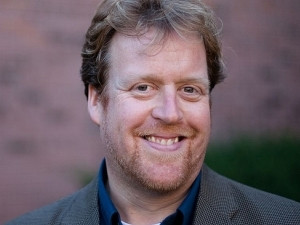
The Internet of everything is not the future, it is already happening. This is according to Gartner analyst, Chris Howard.
Speaking at the Gartner Symposium in Cape Town, Howard says most of the aspects associated with the Internet of things are at the trigger phase where it is new and garnering a lot of interest. "In 2009, there were about 2.5 billion things that were connected. By 2020, there will be 15 billion to 30 billion things."
He notes that predictions on this are likely to vary significantly, because it depends on what "things" are counted. Gartner considers connected things to be objects with a unique IP address. "If you count all the stuff that is on mesh networks, for example, that [predictive] number could go up to a trillion."
He emphasises that the Internet of everything should be smartly utilised, connecting things only if it makes sense. "Just because something has a sensor, it doesn't mean you have to connect it to the Internet."
Howard points out there are four ways in which the Internet of things can be leveraged for enterprises. The Internet of things can be managed to optimise utilisation. An example of this would be an escalator sensor that allows the escalator to speed up when people approach, but also counts the amount of people on the escalator, thereby monitoring foot traffic in a building.
Enterprises can also monetise the Internet of things; for example, as some car insurance companies do by determining a customer's premium based on driving habits and patterns. The Internet of things can also be utilised in an operational capacity, for example by managing a pipeline in a remote location. Lastly, the Internet of things can provide digital services and content; for example, a minibus that also has screens that can download movies to keep passengers busy for long distances.
Endless opportunity
The possibilities of the Internet of everything are endless, and can be utilised in any industry, says Howard. As an example, he mentions the benefits of a connected government service centre, such as a Department of Home Affairs office. "By being connected, the environment can not only know how many people are in it, but also know vital information about each person, such as the ID number, expiration date of documents, etc," he explains. Staff can be monitored and managed according to where they are needed, and mobile apps can be engaged to indicate estimated waiting time.
A construction site can be better managed using technology, says Howard. The environment can detect material usage, scan complex areas, detect staff by trade and area, and do 3D monitoring on site.
Other unusual objects that are now connected include TweetPee, a nappy with a sensor that alerts a parent via a smartphone that the baby needs changing. Mattresses have been developed for use in hospitals that can detect the likelihood of bedsores developing before they do, based on the patient's position. Smart trash cans are being used in big cities around the world, and alert authorities when they need to be emptied, saving time and resources. A fork that tracks calorie intake and eating patterns, a soccer ball that detects the angle and strength of a player's kick, and a plant sensor that indicates when the plant needs watering, are all objects that have become part of the Internet of things.
The downside
Howard notes there still remain some questions unanswered, such as who will own the home of the Internet of things relationship, what will be the wireless protocols, and who will be the hub or gateway for these connected objects?
"Security breaches are also a serious concern," says Howard. He points out that the Internet of things increases the attack surface for people who want to do harm. He notes that things such as medical pills, with sensors that can determine patient data such as heart rate and body temperature, have turned the human body into a hackable surface.
Another potential problem Howard predicts is the data collected by these objects falling into the wrong hands. "This data is a gold mine for consumer product manufacturers." Marketing and advertising companies will sooner or later get their hands on this personal information, he says.
A problem for businesses will be aligning the responsibilities of IT and operational technology. "This could result in a political struggle, because CIOs are now responsible for stuff they were not responsible for before."
Budget overruns are another concern that should be considered. The Internet of things presents risk to the company that ignores it and shows a lack of innovation, as it can then easily be surpassed by its competitors, he says.
Share